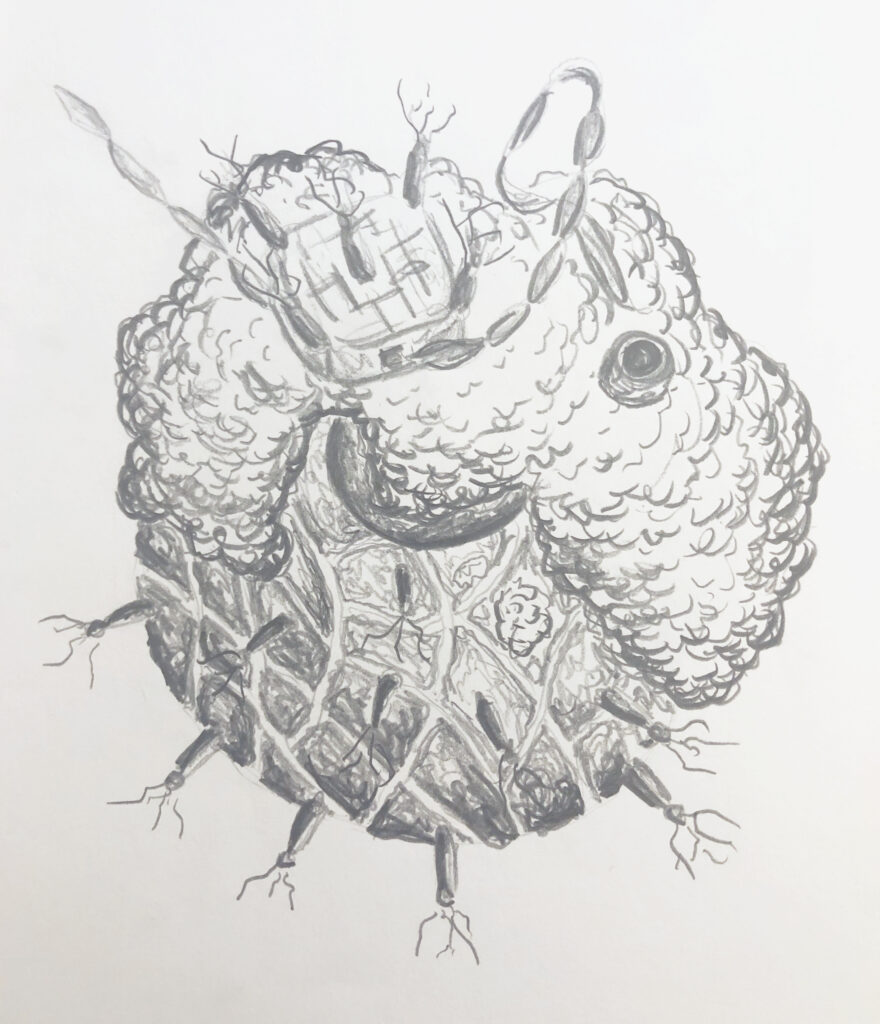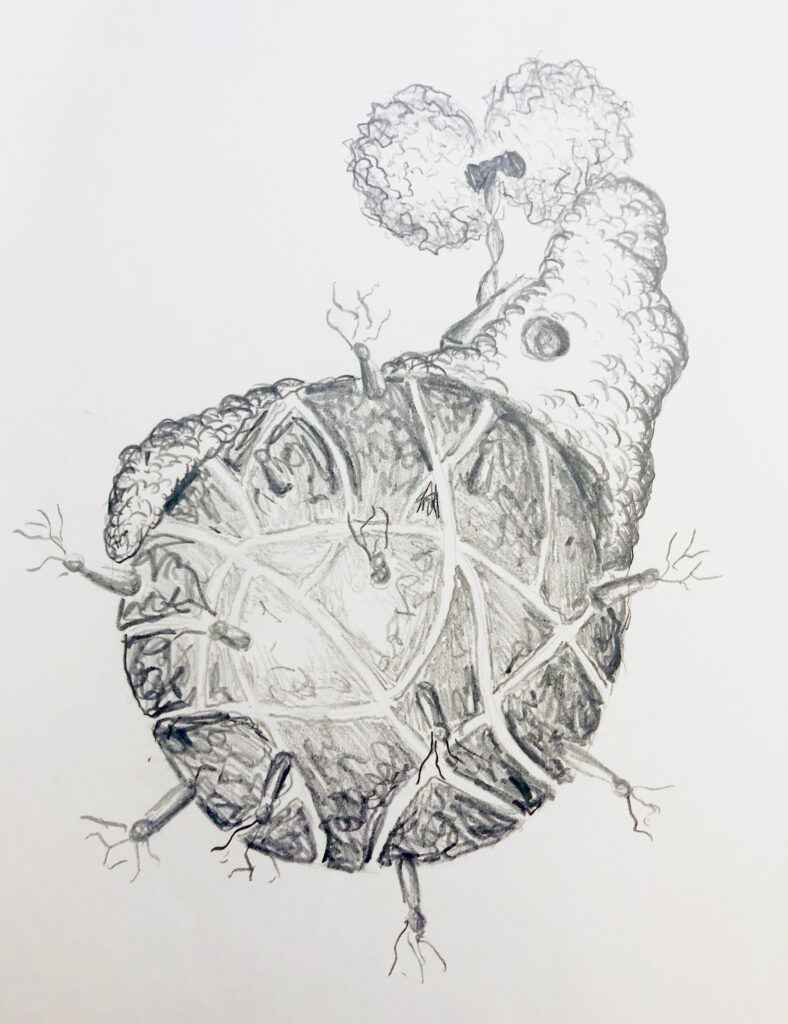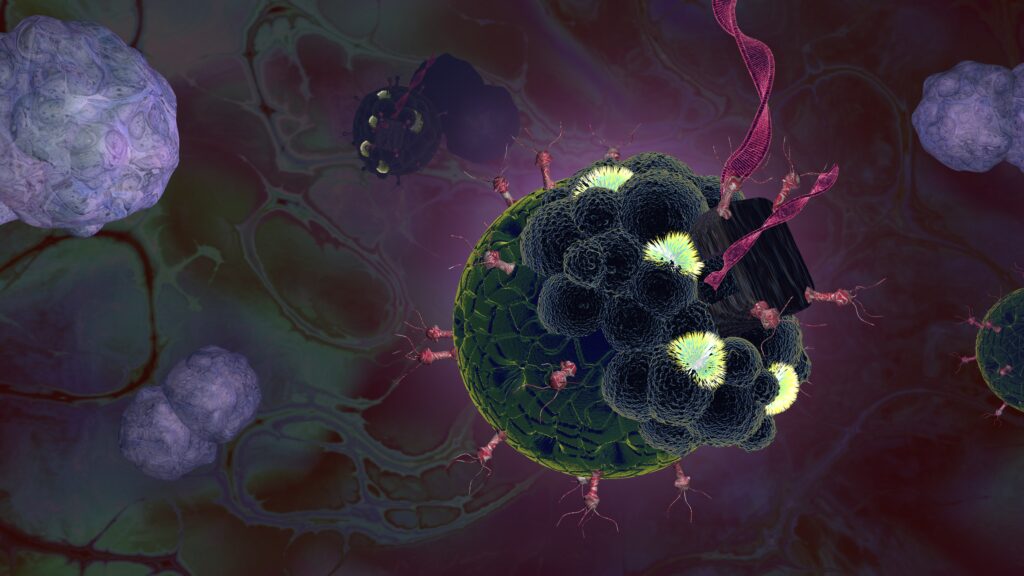
Cancer becomes an oftentimes unbeatable disease to the human body after a period time—even after invoking the immune system, its natural fighting mechanism. The CD4 Interleukins Diatom combines the immune system’s capabilities with the aid of machinic components to modify the way cancer fighting cells infiltrate the enemy cells. This project concept was inspired the hope of a future cure for cancer, a disease that has affected a significant portion of my family.
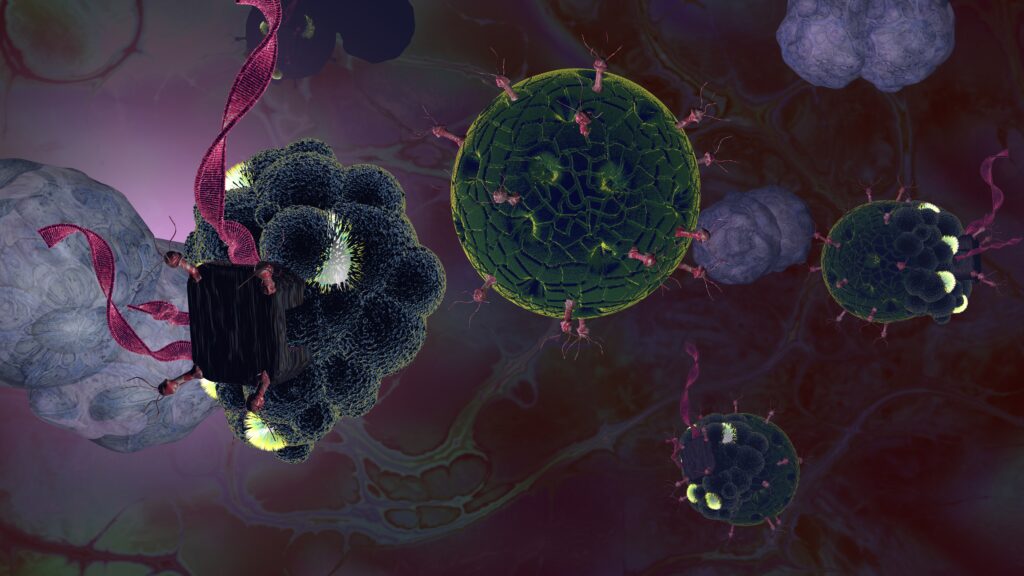
Cancer mutations eventually become unrecognizable to white blood cells, a common reason cancer can surpass the immune system. The CD4 cell is a type of white blood cell that releases cytokines (proteins) to communicate with white blood cells. The main body of the diatom project is a CD4 cell that has produced an interleukin cytokine (blue textured component extruding from the spherical body) from its pores. During the cancer mutation process, the part that makes cancer so unrecognizable and ultimately unbeatable, the CD4 cell sends the cytokine away from its body and toward the mutating cells which is detected by the camera functioning sensors on the diatom (yellow hairy components). Like a camera, these components ‘hairs’ act like light rays to send and receive a reflection to ensure they are seeing a mutating cell.
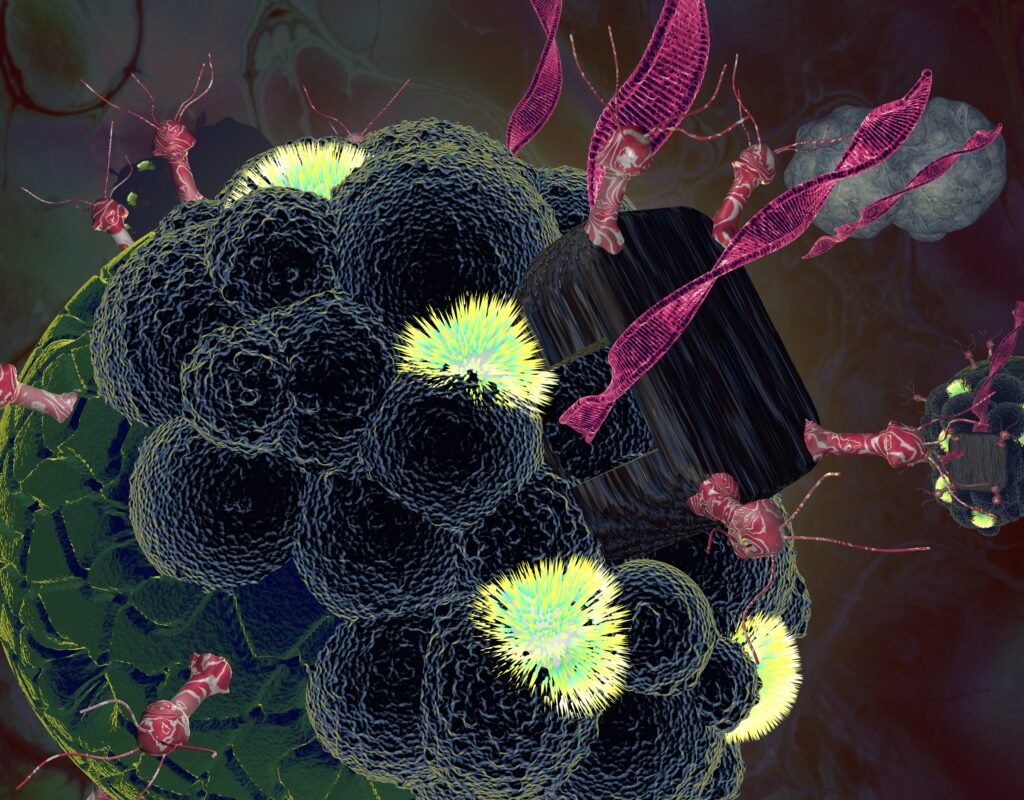
After identifying the cell, the cytokine inserts a default DNA form into the mutating cell—the only time when DNA can be transferred and changed. This is done so with the box shaped extruding device on the cytokine. This resets the cancer cells to a recognizable and destroyable form. The cytokine then travels back to the CD4 cell, latching on with its machinic pink marbled tentacles to identify its right cell and notify it about the infiltrated cancer cells. With the cancer cell weak and the CD4 notified, the CD4 finishes the process by attacking the cancer cell by sucking it into the very pores that generated the cytokine to begin the process. The cell is destroyed by the chemical reaction from inside the cell. The cancer process can ultimately be stopped at its source if the mutation process is ended—precisely what the diatom aims to do.
